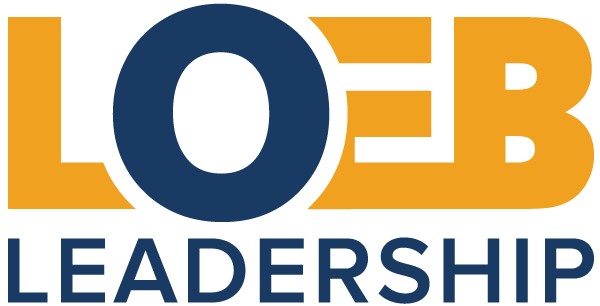What Culture Looks Like When No One’s Watching
In every organization, culture is more than slogans on the wall or onboarding modules. It’s what people do when no one is watching. True culture transformation begins when daily actions reflect, and not contradict, your stated values.
The Silent Signals of Culture
Culture reveals itself in how people treat each other and make decisions without direct oversight. These quiet cues—credit-sharing, responsiveness, and accountability—speak louder than mission statements.
You can have the most inspiring purpose on paper, but if day-to-day behaviors don’t match, lived experience becomes inconsistent and corrosive. As organizational culture pioneer Edgar Schein said, “The only thing of real importance that leaders do is to create and manage culture.”
If you're a leader looking to strengthen your culture from the inside out, consider partnering with Loeb Leadership. Our team supports organizations in translating their values into meaningful, everyday action through customized coaching and consulting.
Why Invisible Culture Matters More Than Ever
With hybrid and remote work the norm, culture is harder to observe—and easier to ignore. Leaders must intentionally notice:
Who speaks up—or stays silent—in meetings
How mistakes are owned—or hidden
How conflict is resolved when leadership isn’t in the room
A 2022 MIT Sloan study found that “toxic culture—not pay—is the strongest predictor of employee attrition.”
Organizational Values in Action (or Inaction)
If “collaboration” is listed as a value but siloed behavior is rewarded, your culture is out of sync. Similarly, if “integrity” is referenced in your culture commitments but ethical lapses go unchecked, trust erodes.
To realign culture with organizational values:
Define behaviors that manifest each value
Recognize and celebrate those who model them
Address misalignment early and constructively
How to Spot Culture in the Wild
Culture shows up in everyday interactions:
Who leads the conversation? Who’s unheard?
Is transparency encouraged or punished?
Do stressed teams help each other or compete?Are promotions given to those who excel in their roles or to those with the right connections?
Combine observations with formal tools like 360° feedback, culture assessments, and pulse surveys. Gallup notes that consistent, values-based experiences drive trust, well-being, and retention.
Our Organizational Development consulting offers these diagnostics and coaching support.
Culture Is Built in the Small Moments
Culture isn’t formed with ping-pong tables or free lunches. It’s built in small moments:
Does a scheduled 1:1 get rescheduled or canceled without follow-through?
Is feedback given thoughtfully or avoided entirely?
Is credit shared with teammates publicly or quietly taken by an individual?
These interactions accumulate over time. Loeb’s executive coaching helps leaders build presence and consistency in these moments.
Culture Transformation Is Ongoing
Culture evolves. Teams shift. Strategies change. If you want to thrive through it all, then you need to always be alert and attentive to your culture.
A strong workplace culture needs:
Clear Values, Lived Daily
What it means:
Your organizational values shouldn’t just exist in a handbook. They should guide behaviors, decisions, and communication at every level, and your leaders need to be held accountable for modeling these values.
Actions you can take:
Define behavioral indicators and expectations for each core value (e.g., what “respect” or “innovation” looks like in practice).
Incorporate values into performance reviews, hiring criteria, and leadership evaluations.
Recognize employees and teams who embody the company’s values in day-to-day work.
Example:
Patagonia has built its culture around environmental stewardship. Employees are encouraged to engage in activism, and the company backs it up by offering paid time off for environmental volunteer work, directly connecting values to everyday action.
Empowered Teams, Trusted to Act
What it means:
Trust is the foundation of empowerment. When employees are empowered, they don’t just follow orders. They own outcomes, take initiative, and bring creative problem-solving to the table. This helps them embody leadership qualities and act like an owner of the organization.
Actions you can take:
Give teams autonomy over how they approach their goals.
Encourage experimentation, even if that means making mistakes.
Equip employees with the tools and training they need to make informed decisions.
Example:
Spotify uses the “Squad” model, which consists of small, autonomous teams that own their product from end to end. Each squad decides how they work, what tools they use, and how they deliver value. This structure promotes accountability and innovation simultaneously.
Accountable Systems, Reinforcing Expectations
What it means:
Culture breaks down when there’s no consistency. Systems, policies, and leadership behaviors must reinforce the culture you claim to have. Otherwise, you erode trust and credibility.
Actions you can take:
Align reward and recognition systems with cultural priorities.
Address misaligned behavior early and fairly—regardless of hierarchy.
Regularly audit internal processes (e.g., onboarding, performance management) to ensure they reflect stated values.
Example:
Netflix is famous for its “freedom and responsibility” culture, but that freedom is anchored in accountability. Leaders are expected to deliver candid feedback, and employees know that sustained underperformance, regardless of intent, won’t be overlooked. This clarity supports a high-performance culture with minimal bureaucracy.
And, it’s important to remember that culture is not just a leadership responsibility. Every employee plays a part. But without modeling and reinforcement from the top, even the most enthusiastic teams will struggle to sustain it.
Start Where You Are
Change doesn’t demand a top-down shift. It begins with one team, one manager, one action.
Are you struggling to create the culture you want? Taking the first step can be daunting because there are often so many options for where to start. The most important thing is to take that step.
Here are some ideas to get started:
Host a values alignment workshop
Spark team conversations about unspoken norms and collaborate to codify expectations
Ask: “What does our culture feel like when no one’s watching?”
These actions signal commitment and begin to transform culture from the inside out.
Begin Your Cultural Transformation Journey with Loeb Leadership
Ready to take the next step? Connect with us to begin your culture transformation journey.
Follow Tamara Fox on LinkedIn for more insights on employee health and wellness, navigating grief and trauma at work, organizational culture, tips for successful mergers & acquisitions, and more.



